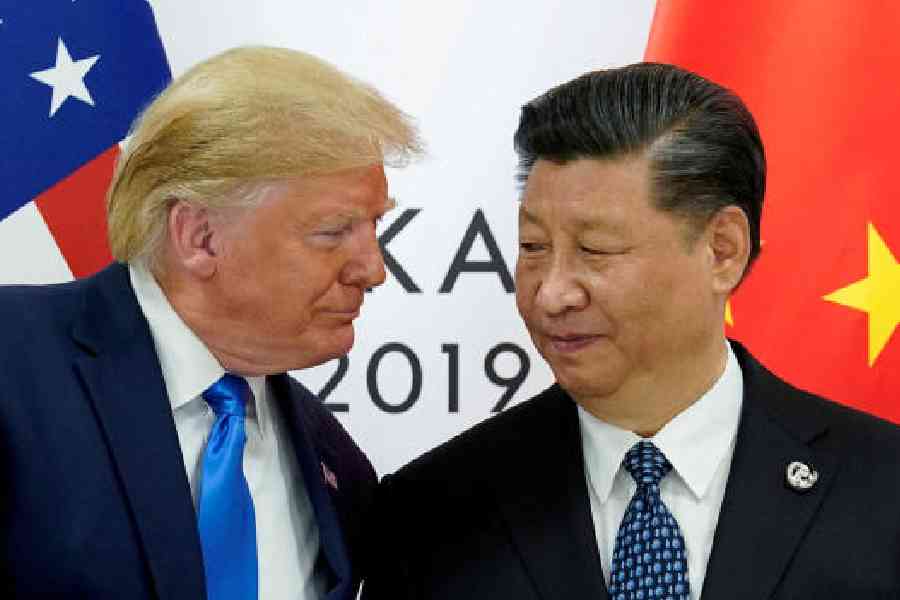US President Donald Trump’s decision on Saturday to impose new tariffs on imports from China poses a dilemma for Beijing’s leaders: Is it better to ignore the new tariffs or retaliate?
Doing little runs the risk of looking weak in the eyes of the Chinese people. China’s extensive domestic propaganda apparatus has described China as a rising power, while the US is portrayed as suffering inexorable decline.
But vigorous retaliation risks starting a global trade war that could damage China more than the US. China’s trade surplus — the amount by which its exports exceeded imports — reached almost $1 trillion last year. Exports, and the construction of new factories to make further exports, are practically the only areas of strength these days in the Chinese economy.
China’s initial reaction on Sunday was cautious: the ministry of commerce said it would challenge the tariffs at the World Trade Organisation (WTO). That body’s investigative panels can try to embarrass a country that violates international free trade rules, by criticising a specific trade action.
But the WTO has lost much of its power since 2019.
Some in China had been relieved that Trump initially focused his criticisms on other countries. But few expected that to last.
“I don’t think we feel optimistic about the future of this relationship,” Wu Xinbo, dean of the Institute of International Studies at Fudan University in Shanghai, said on Thursday.
On Saturday, President Trump put additional 10 per cent tariffs on goods imported from China, as well as 25 per cent tariffs aimed at Mexico and Canada. He said he might escalate the tariffs if the countries retaliate.
In its response, China’s commerce ministry said it would take “countermeasures to firmly safeguard its rights and interests”. But the ministry also urged the US to “strengthen cooperation”.
China has shown in the weeks since President Trump was re-elected that it may be willing not only to retaliate to tariffs but also to up the ante.
China has put export controls on a gradually lengthening list of materials and technologies. In early December, China halted the export to the United States of critical minerals like antimony and gallium, which are used in the manufacture of some semiconductors.
The export ban was in retaliation for a decision by President Joseph R. Biden Jr. a day earlier to expand American curbs on the transfer of technology to China.
Beijing’s response went beyond any previous export restrictions: For the first time, Beijing officially banned other countries that buy these minerals from re-exporting them to the US. China had previously been a critic of such transshipment bans, describing them as an unfair form of “long-arm” jurisdiction that interfered with international commerce.
Yet Beijing is aware, Chinese experts said, that a strong reaction from China poses two big risks.
Further restricting exports could prompt multinationals to stop investing in China and put their new factories in other countries. Another risk is that such curbs on exports by China could trigger a further response from President Trump.
An upward spiral in trade restrictions is what happened during the first Trump administration. China responded to that first round of tariffs in 2018 with its own penalties on American exports. But as Trump imposed further rounds of tariffs, Beijing quickly ran out of American exports to target. China sells nearly four times more goods to the US than it buys.
China and the Trump administration agreed to stop the escalation in January 2020, but left in place most of the tariffs that had been imposed.
Some Chinese experts contend that tariffs will hurt American consumers, by pushing up prices, more than they will hurt China.
“This style of bluff will backfire,” said Zhang Weiwei, dean of the China Institute at Fudan University in Shanghai. “From our calculation, over 90 per cent of the increased tariffs were in fact paid by American companies or consumers.”
However, some Western economists argue that the question of who pays tariffs is not clear-cut. To avoid big losses of market share in the US after the previous imposition of tariffs, some Chinese companies lowered prices. That would have helped them to offset the tariffs and to dissuade American importers from turning to suppliers in other countries.
China’s exports to the entire world rose more than 12 per cent last year by volume, but the increase in dollar terms was only half as much, as companies slashed prices.
China’s currency has also weakened in recent months, and prices are falling in China for many goods. That has made Chinese goods more competitive in foreign markets, including the US, and may offset part of the cost of the tariffs imposed on Saturday.
New York Times News Service










